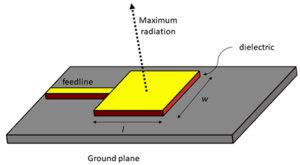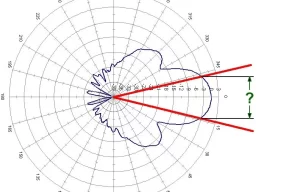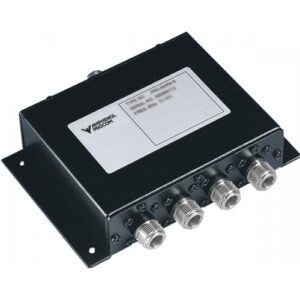Table of Contents
Broad Spectrum Capability
Near-field probes are a key instrument in the electromagnetic testing world, and they are made to effectively function over various frequencies. They range from about 100 kHz that is valuable at the low end, for instance, to monitor interference in the electrical grid, to about 6 GHz that can successfully serve high-speed wireless communications systems, such as WiFi and Bluetooth technology. Thus, such wide capability is applicable to numerous fields. For instance, smartphones and tablets are being tested in the consumer electronics world, meaning, that at the given frequency range near-field probes are being implemented. Gadgets should operate under low, medium, and high frequencies to perform the right GPS, LTE, and Wi-Fi compatibility. For these screening purposes, the frequency of the given near-field probe could be from 1 GHz to 3 GHz.
Another example is the automotive sector. Here, much attention is given to the keyless entry system, primarily running on 433 MHz or 868 MHz. However, if a near-field probe with the implemented frequency of 433 MHz is taken, engineers can properly test and modify the electromagnetic field around the car, making locking the vehicle much safer. Quality and function are the most critical components in regard to near-field probes. The instrument should not only correspond to the desired frequency range but also perform an accurate screening and be damage-resistant. Generally, the cost of such probes starts at $200 for basic frequency ranges. More sophisticated options, especially ones that include higher frequencies or can be adjustable, can be priced over $1,500.
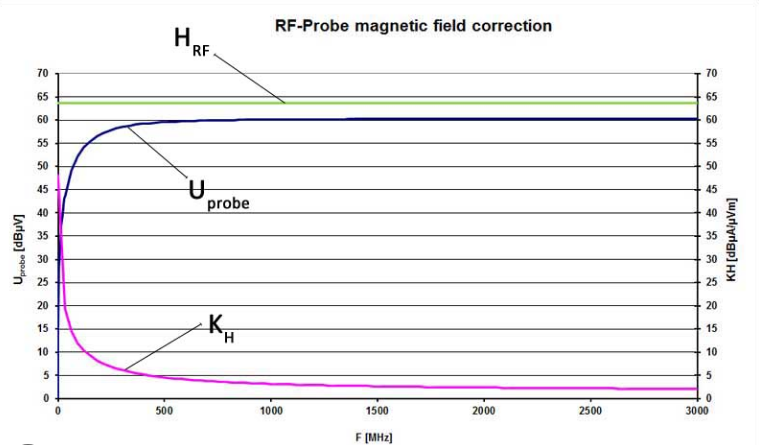
Type Variation
There are different types of near-field probes that range from sector-specific options to those that require a certain frequency range. In particular, electric field probes and magnetic field probes are two general types. These determine the purpose of the device and, as such, the area of its utility and adaptability.
The first type, electric field probes, is used in high-frequency operation. Frequency ranges that are facilitated vary, and the range of 300 MHz to 3 GHz, is, particularly common. This type has many applications in the telecommunications industry where it is used to test and improve the work of antennas and other broadcasting tools. For example, when setting up a Wi-Fi antenna in a router, technicians use this type to make sure that the antenna emits and receives the signal correctly. This affects the quality and strength of the Wi-Fi signal and, ultimately, of the internet connection in a home or an office.
Magnetic field probes are usually used in the lower frequency range. 30 kHz to 300 MHz, is the most common range for these applications. These probes have many uses in an industrial setting where different types of chopping and, as a result, electromagnetic interference. A typical example is a power plant where such a field probe might be used to determine the presence of stray electromagnetic fields that can compromise the work of particularly sensitive equipment. In this way, power plant workers can be aware of potential future problems and intervene to prevent them in time.
The choice between the two types should be determined by the particular case requirements, meaning frequency sensitivity and the type of the electromagnetic field in question. The price of these devices also varies. A simple, standardized electric field probe can be purchased for around $300, while a specialized magnetic field probe costs around $600 due to its frequency range of fewer options for expanding its use.
Low-Frequency Probes
Low-frequency probes are essential in cases when it is necessary to measure and detect low-frequency electromagnetic fields. Usually, they are in the interval of frequencies from 30 to 300 kHz to 300 MHz. In many cases, such tools are used to control the impact of high voltage on the performance of devices and systems in facilities.
As for the medical equipment testing, this type of probes is used to protect and guarantee the proper functioning of devices. Although various high-frequency signals and radiation are transferred during diagnostic procedures or similar treatment, it is crucial to identify the risks associated with the impact of low-frequency corresponding waves on such existing equipment as MRI, as well as the functioning of various devices, such as pacemakers. Technicians address to low-frequency probes and measure the level of electromagnetic interference to these tools and identify ways to lower this exposure to protect durability, efficiency, accuracy, and safety of such significant elements. The risk of damage should also be predicted because of external sensors that can malfunction due to the preceding exposure to low-frequency waves.
Another real-life example and case of using low-frequency probes are found in the area of automotive. Today, experts actively test the electro-magnetic compatibility of various systems and details and the resistance of modern devices used in cars. For example, as for the low-frequency detectors, they are used to guarantee the operability and safety of car radios and systems of communication and navigation. For such systems as AM and FM radio stations, the adequate low frequency can be analyzed to test the possibility of system interference. In this case, a low-frequency detector is essential for simulating the level of frequencies used for radio signals (up to 300 kHz) and measuring the response of systems, protecting the radios of cars from receiving the signals of the stations of different range and being influenced by them. Overall, it is more cost-effective to buy a low-frequency probe than to pay fines and compensate the raising costs of low-quality non-resistant equipment. Thus, it is possible to save money and guarantee the security and functioning of tools by testing and measuring their exposure to low-frequency signals.
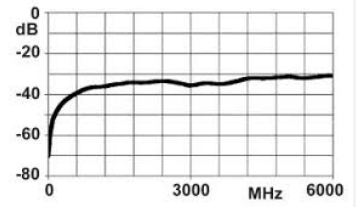
High-Frequency Probes
Ultra-high frequency probes are tools designed to operate at the very extreme of the frequency spectrum. These probes typically operate from 3GHz to over 20 GHz and find applications in technologies that are on the edge of our technological achievement. This essay will discuss the application and costs of ultra-high frequency probes.
One of the sectors where ultra-high frequency probes are used is radar technology. Radars are used in aviation and at the sea to detect foreign planes and ships and identify their origin and trajectory. It is of utmost importance that the radar systems that are used in the detection and designation of planes at long distances operate optimally. Here, ultra-high frequency probes are used to test the frequencies being used. Radars in some airports operate around 5GHz to 14GHz, and this is facilitated and checked by ultra-high-frequency probes used to track the incoming and outbound airplanes at the airport.
Another use for such probes is in the realm of finance. High-frequency trading is a type of financial transaction carried out using electronic trading means. It uses ultra-high frequency probes to ensure that the communication infrastructure used is operating to its fullest extent. Such infrastructure can operate on almost 10 GHz, as the faster data is transmitted, the more successful trades can be carried out.
A probe of this type has significant costs associated with it. Generally, the prices of these vary from $2000 for the lower end of frequencies up to over $5000 for those that can operate closer to the higher end of the frequency range. Such a high price is fully justified considering the potential returns that the traders may face when the transactions and communication with the server can be made as fast and accurately as possible.
Ultra-High Frequency Probes
Customizable near-field probes are an important breakthrough in electromagnetic testing. The most important advantage is the ability to tune their performance to meet specific applications’ requirements. These probes can be tuned within a broad frequency range, typically from a few kHz to several GHz. As a result, near-field probes can be used in many different industries, from telecommunications to automotive.
For examples, a major application for these probes is the testing of wireless consumer products’ performance. For example, wireless electronic manufacturers are required to test the performance of their devices at different frequency ranges. In particular, devices must support the frequency ranges used by international communication standards and should also be able to work with global network bands. For example, a probe can be tuned to 850 MHz to test the devices’ compatibility with the GSM-enabled networks. Afterward, the frequencies can be tuned to 2.4 GHz to test the devices’ Wi-Fi capabilities.
In the automotive industry, customizable probes are mostly used for the tests of automotive electromagnetic compatibility. For example, near-probes are tuned to various frequencies to ensure the electronic systems of a vehicle remain immune to various sources of interference such as radio transmissions or other electronic devices. The frequencies used for testing are selected to cover the range of expected interferences. As a result, the customizable probe can be tuned at several frequencies to ensure the test equipment detects the electronic systems’ performance in any conditions.
Customizable near-field probes are more expensive than fixed-frequency models. The cost premium reflects their increased flexibility. For example, these probes can be 20-40 times more expensive than equivalent at a single frequency point. Overall, the prices can start at $500 for a basic product and go beyond $3,000 for the most advanced solution with high frequencies and extensive tunability. Despite the high cost, using these probes is a cost-effective solution, especially in cases when more than one fixed-frequency probe can be replaced by a customizable model.
Customizable Probes
Customizable near-field probes are an indispensable tool for any professional who requires versatile, adjustable instruments, capable of making precise measurements across a wide range of frequencies. The advantage these probes offer is that they can be made to fit a specific range of frequencies, making their use in dynamic environments highly desirable. In particular, many telecommunications engineers find these probes highly useful for their work, as it is the case, for instance, with the optimization of network hardware like routers and cell towers. With a customizable near-field probe, it is possible to adjust the frequency and make it identical to the one originating from an LTE cell tower in a rural area, measuring 700 MHz. It is then possible to swiftly switch and test the 2600 MHz frequency for urban towers. The latter measurement will demonstrate whether the tower is operational and within set standards by which it should function. Another example is research and development laboratories, where scientists employ these probes when their experiments require the control of an electromagnetic field for testing, with frequencies differing from a previously conduced experiment. One such example could be testing an array of new materials with a frequency of around 500 kHz, that then requires a readjustment of the same probe, let us say to 3 GHz, in order to conduct tests for electromagnetic interference . Customizable near-field probes can save professionals time, as they would no longer need to have a fixed frequency probe for each interval in their respective ranges, as well as money, as a single high-quality probe is often cost $500-3,000, a price that would be easily justified by the versatility of the tool in use and comparative cost of buying a greater number of testing instruments.

